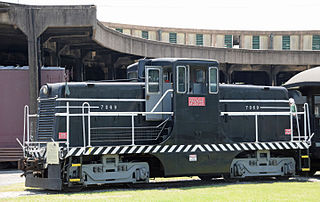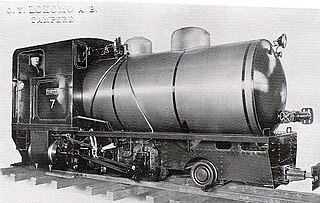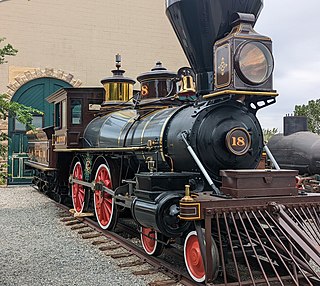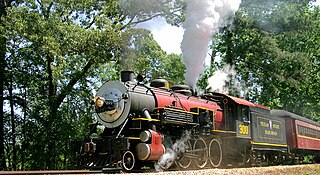This article needs additional citations for verification .(April 2024) |
| Granite Rock Co. 10 | |||||||||||||||||||||||||||||||||||||||||||||||
|---|---|---|---|---|---|---|---|---|---|---|---|---|---|---|---|---|---|---|---|---|---|---|---|---|---|---|---|---|---|---|---|---|---|---|---|---|---|---|---|---|---|---|---|---|---|---|---|
 | |||||||||||||||||||||||||||||||||||||||||||||||
| |||||||||||||||||||||||||||||||||||||||||||||||
| |||||||||||||||||||||||||||||||||||||||||||||||
| |||||||||||||||||||||||||||||||||||||||||||||||
| |||||||||||||||||||||||||||||||||||||||||||||||
Granite Rock Company No. 10 is a preserved S100 class 0-6-0 T steam locomotive built in 1942 by H.K. Porter for the United States Transportation Corps.
This article needs additional citations for verification .(April 2024) |
| Granite Rock Co. 10 | |||||||||||||||||||||||||||||||||||||||||||||||
|---|---|---|---|---|---|---|---|---|---|---|---|---|---|---|---|---|---|---|---|---|---|---|---|---|---|---|---|---|---|---|---|---|---|---|---|---|---|---|---|---|---|---|---|---|---|---|---|
 | |||||||||||||||||||||||||||||||||||||||||||||||
| |||||||||||||||||||||||||||||||||||||||||||||||
| |||||||||||||||||||||||||||||||||||||||||||||||
| |||||||||||||||||||||||||||||||||||||||||||||||
| |||||||||||||||||||||||||||||||||||||||||||||||
Granite Rock Company No. 10 is a preserved S100 class 0-6-0 T steam locomotive built in 1942 by H.K. Porter for the United States Transportation Corps.
No. 10 was built in Pittsburgh, Pennsylvania, by H.K. Porter in 1942, for the United States Transportation Corps. (USATC), originally No. 5001, it served in the Army depot in Tracy, California. [1] [2]
After World War II, in 1947, No. 5001 was sold to the Granite Rock Company of Watsonville, California and given the number 10. [3] The locomotive worked at the company's A.R. Wilson quarry in Aromas, California until the 1950s, when it was replaced by diesel locomotives and taken out of service. [4]
No. 10 stayed in Granite Rock's yards, until Bruce Woolpert the president and CEO, started a restoration effort in 1988 The work was undertaken at the shops of the California State Railroad Museum. The company donated No. 10 to the museum in 1997. [4] [5] The restoration work included a new boiler built by the Dixon Boilerworks, in Los Angeles. [6] The locomotive was fully restored to operating condition by May 1997, and became the principle motive power of the museum's Sacramento Southern Railroad excursion railroad. [1] [2] [7]
On August 29, 1997, No. 10 was operated by an all-female crew to mark the anniversary of the ratification of the 19th. Amendment. [8]
In 2010, No.10 was loaned to the Niles Canyon Railway for their steam festival. [9] The following year, No. 10 was taken out of service for extensive boiler repairs, before returning in April 11, 2015. [6]
As of 2024, No. 10 is still out of order as the museum is fixing some cylinder issues and reworking the valve bushings. [2]

A geared steam locomotive is a type of steam locomotive which uses gearing, usually reduction gearing, in the drivetrain, as opposed to the common directly driven design.

The Shay locomotive is a geared steam locomotive that originated and was primarily used in North America. The locomotives were built to the patents of Ephraim Shay, who has been credited with the popularization of the concept of a geared steam locomotive. Although the design of Ephraim Shay's early locomotives differed from later ones, there is a clear line of development that joins all Shays. Shay locomotives were especially suited to logging, mining and industrial operations and could operate successfully on steep or poor quality track.

A Mallet locomotive is a type of compound articulated steam locomotive, invented by the Swiss engineer Anatole Mallet (1837–1919).

The Southern Pacific was an American Class I railroad network that existed from 1865 to 1996 and operated largely in the Western United States. The system was operated by various companies under the names Southern Pacific Railroad, Southern Pacific Company and Southern Pacific Transportation Company.

The California State Railroad Museum is a museum in the California State Parks system that interprets the role of railroads in the Western U.S.. It is located in Old Sacramento State Historic Park at 111 I Street, Sacramento, California.

H.K. Porter, Inc. (Porter) manufactured light-duty railroad locomotives in the US, starting in 1866. The company became the largest producer of industrial locomotives, and built almost eight thousand of them. The last locomotive was built in 1950, but the company continues to produce industrial equipment to this day.

The United States Army Transportation Corps (USATC) S100 Class is a 0-6-0 steam locomotive that was designed for switching (shunting) duties in Europe and North Africa during World War II. After the war, they were used on railways in Austria, China, Egypt, France, Great Britain, Greece, Iran, Iraq, Israel, Italy, the Netherlands, Palestine, the United States, and Yugoslavia.

The United States Army Transportation Corps (USATC) S118 Class is a class of 2-8-2 steam locomotive. Built to either 3 ft, 1,000 mmmetre gauge or 3 ft 6 in gauge, they were used in at least 24 different countries.

The GE 44-ton switcher is a four-axle diesel-electric locomotive built by General Electric between 1940 and 1956. It was designed for industrial and light switching duties, often replacing steam locomotives that had previously been assigned these chores.

Atchison, Topeka and Santa Fe 2926 is a class "2900" 4-8-4 type steam locomotive built in May 1944 by the Baldwin Locomotive Works for the Atchison, Topeka & Santa Fe Railway (ATSF). It was used to pull passenger and fast freight trains, mostly throughout New Mexico, until it was retired from revenue service in 1953. Three years later, it was donated to Coronado Park in Albuquerque for static display.

A fireless locomotive is a type of locomotive which uses reciprocating engines powered from a reservoir of compressed air or steam, which is filled at intervals from an external source. They offer advantages over conventional steam locomotives of lower cost per unit, cleanliness, and decreased risk from fire or boiler explosion; these are counterbalanced by the need for a source to refill the locomotive, and by the limited range afforded by the reservoir.

C. P. Huntington is a 4-2-4T steam locomotive on static display at the California State Railroad Museum in Sacramento, California, USA. It is the first locomotive purchased by the Southern Pacific Railroad, carrying that railroad's number 1, and it is named after one of the Big Four who founded it.

An oil burner engine is a steam engine that uses oil as its fuel. The term is usually applied to a locomotive or ship engine that burns oil to heat water, to produce the steam which drives the pistons, or turbines, from which the power is derived.
Graniterock is an American corporation, founded in 1900 as "Granite Rock", and based in Watsonville, California. It operates in the construction industry providing crushed gravel, sand, concrete, asphalt and paving services.

The Virginia and Truckee 18 Dayton is a historic standard gauge steam locomotive on display in Sacramento, California. It spent its working life on the Virginia and Truckee Railroad.

Valley Railroad 3025 is a China Railways SY class steam locomotive that was built in 1989 by the Tangshan Locomotive and Rolling Stock Works for the Knox and Kane Railroad of Pennsylvania, US, where it remained until that railroad's demise. It was purchased by the Valley Railroad Company of Connecticut in 2008, and later rebuilt as a masquerade of a New Haven J-1 "Mikado" locomotive and re-numbered 3025.

Southern Pacific Railroad 2467 is a preserved 4-6-2 “Pacific” type steam locomotive. Built by Baldwin in 1921, it was used by the Southern Pacific Railroad to pull passenger trains until it was retired from service in 1956. On July 25, 1960, it was donated to the city of Oakland, California, who had it placed on display at the Harrison Railroad Park. In July 1990 a restoration began by the Friends of the 2467, which later merged into the Pacific Locomotive Association. In June 1999 it was returned to operation and made an appearance at Railfair 1999. Although serviceable, SP 2467 is currently on static display while on loan from its operator, Pacific Locomotive Association, Inc., to the California State Railroad Museum in Sacramento, California.

The Southern California Railway Museum, formerly known as the Orange Empire Railway Museum, is a railroad museum in Perris, California, United States. It was founded in 1956 at Griffith Park in Los Angeles before moving to the former Pinacate Station as the "Orange Empire Trolley Museum" in 1958. It was renamed "Orange Empire Railway Museum" in 1975 after merging with a museum then known as the California Southern Railroad Museum, and adopted its current name in 2019. The museum also operates a heritage railroad on the museum grounds.

Southern Pine Lumber Company No. 28 is a preserved 2-8-0 “Consolidation” steam locomotive that was originally operated by the United States Army Transportation Corps. It is one of three survivors out of over 1,500 General Pershing locomotives built in 1917 for the War Department in World War I, originally numbered 396. After the war, the locomotive was sold off to the Claiborne and Polk Railroad for short distance freight service, and from there, it was sold multiple times throughout its revenue career, until 1956, when it was sold to the Southern Pine Lumber Company in East Texas, where it operated until it was retired in the early 1970s. In 1972, the locomotive was donated to the Texas Parks and Wildlife Department, who moved it to the Texas State Railroad for restoration four years later. After over twenty years of being stored, awaiting for restoration to come to fruition, the locomotive was fired up again in April 1996 as TSRR No. 300. It has pulled multiple excursion trains between Rusk and Palestine every year since its return to steam alongside a few other steam locomotives, including 2-8-2 No. 400. As of 2024, the locomotive was reverted to one of its original identities as SPLCO No. 28, but is currently getting its running gear repaired in Rusk.

St. Louis, Iron Mountain and Southern Railway #5 is a 2-4-2 "Columbian" type steam locomotive. It was originally built by H.K. Porter, Inc. in 1946 as a saddle tank engine for the Central Illinois Public Service Company. In 1963, the locomotive was donated to the Mid-Continent Railway Museum in North Freedom, Wisconsin as a static display piece. In 1971, #5 was sold to the Crab Orchard and Egyptian Railway to be restored to operating condition, and #5 began pulling passenger excursions on the Crab Orchard and Egyptian's track line, as well as occasional freight runs. During this career, the locomotive was converted to a tender locomotive, and the saddle tank over the boiler was presumably scrapped. In 1985, #5 was sold again to the St. Louis, Iron Mountain and Southern Railway, who one year later began using the locomotive to run tourist trips in Missouri. This career lasted until 1999. Presently, the #5 is out of service, waiting for an overhaul to be completed.